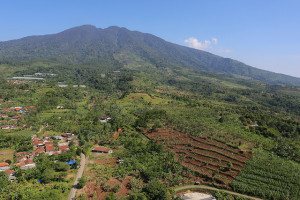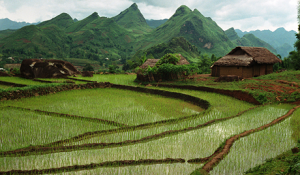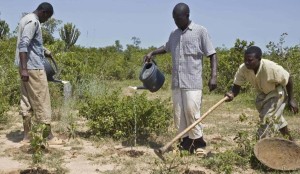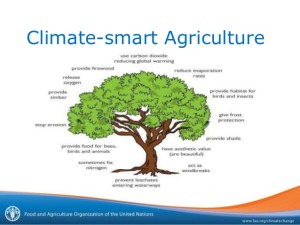 CATIE is an implementing partner of this year’s Global Landscape Forum, hosting a discussion forum that deals with Climate Smart Agriculture (CSA), together with the Association of International Research and Development Centers for Agriculture (AIRCA). Under the title Climate Smart Agriculture for healthy landscapes and livelihoods, CATIE and AIRCA want to show where and how CSA approaches have contributed to healthy landscapes and improved livelihoods.
CATIE is an implementing partner of this year’s Global Landscape Forum, hosting a discussion forum that deals with Climate Smart Agriculture (CSA), together with the Association of International Research and Development Centers for Agriculture (AIRCA). Under the title Climate Smart Agriculture for healthy landscapes and livelihoods, CATIE and AIRCA want to show where and how CSA approaches have contributed to healthy landscapes and improved livelihoods.
Only 2 weeks to go until GLF 2015 will take place in Paris, as the biggest event on the sidelines of the COP21. We spoke to CATIE’s Bastiaan Lourmann about landscapes, CSA and why the GLF is a good place to start.
Why do Climate Smart Agriculture (CSA) and landscape approaches go together well?
CSA requires an integrated and collective approach, since it is inserted in a landscape with many other actors. Many of the CSA interventions are at farm level – and what one does well in one farm can be completely undone by poor agricultural practices of neighbors, or by unthoughtful practices in other sectors.
Recent examples of these are the climate-driven rapid expansion of coffee rust in Central America, or the increasingly common conflicts over water use between agricultural producers, hydroelectric power plants and local fish breeders in several tropical countries.
Other examples of the need for integrated and collective action are the large-scale ecological processes that sustain agriculture: the hydrological cycle, soil formation, and components of the reproductive cycles of plants and animals.
All of these require larger spaces and often a diversity of habitats to function, and therefore knowledge is needed of different disciplines and actions of different stakeholders. In addition, collective action that considers potential impacts of climate change needs guidance and informed decision making.
Landscape approaches, such as the Climate Smart Territorial approach applied by CATIE, or the Climate Smart Villages approach applied by ICIMOD, create platforms that will strengthen local capacity for informed decision making and that facilitate interdisciplinary, multi-stakeholder collective action.
 How does CSA contribute to healthy landscapes?
How does CSA contribute to healthy landscapes?
Healthy landscapes require implementation at different scales beyond the landscape level (for example policies that promote best practices) – but also within those landscapes (farm and household).
The CSA framework not only suggests best crop, animal and farm management practices under a changing climate; it also helps the adoption of a more holistic view of the farm, identifying the different natural resources and ecosystem services on which farming is built, as well as the different outputs of the farms that may affect the natural and human environment. It thus provides a natural link between landscape and agricultural practices on the farm.
 Why do you bring the topic to the Global Landscapes Forum? What do you hope to gain from your event?
Why do you bring the topic to the Global Landscapes Forum? What do you hope to gain from your event?
One of the global development goals is zero hunger, and the potential for producing sufficient food of good (i.e. nutritional) quality is very much related to climate. Nevertheless, agriculture and food production are not very high on the climate change negotiation agenda.
With this session, we hope to be able to show that integrating climate smart agriculture into a landscape approach not only addresses future food problems, but also contributes to achieving the national commitments to the UNFCCC and to several of the global development goals (e.g. poverty reduction [1], gender equality and empowerment of women and girls [5], clean water and sanitation [6], affordable clean energy [7], decent work and economic growth [8], responsible consumption and production [12], climate action [13], life on land [15], and partnerships [17]).
We hope to provide negotiators and decision makers with enough evidence for them to pay more attention to agriculture, agroforestry and livestock in the context of landscape management as part of the solution to climate change adaptation and mitigation.
We think the Global Landscapes Forum is the right place for that, since it links with the COP 21 and has become probably the most influential event outside the COP that deals with land use (expected to attract over two thousand participants, including high level decision makers and scientists).
 What was your experience from previous GLFs? Did the event benefit your work and mission?
What was your experience from previous GLFs? Did the event benefit your work and mission?
The GLF in Lima helped promote the landscape approach, an important element of the work of AIRCA members. AIRCA as such did not participate, but some of its members did: CATIE organized a discussion forum on landscape management where ICIMOD a partner member of AIRCA also shared its experiences.
Together with WRI and IUCN, CATIE coordinated a Launchpad on the 20×20 initiative to restore degraded lands in Latin America and the Caribbean. In particular the Launchpad seemed to have had an impact, with more countries committing themselves to landscape restoration. However, intensive follow up was necessary to achieve that.
INBAR was present with a stand while CABI also participated in the GLF. It seems that, if the discussion forums and launchpads are part of existing initiatives, they work very well to create greater awareness and support additional efforts to obtain commitments towards the implementation of landscape approaches from the national governments.
In times when it is necessary to have visible collective impacts to address common challenges, the GLF has also become an event that has promoted collaboration among partners from different parts of the world, all sharing the same vision that it is time to act together.











